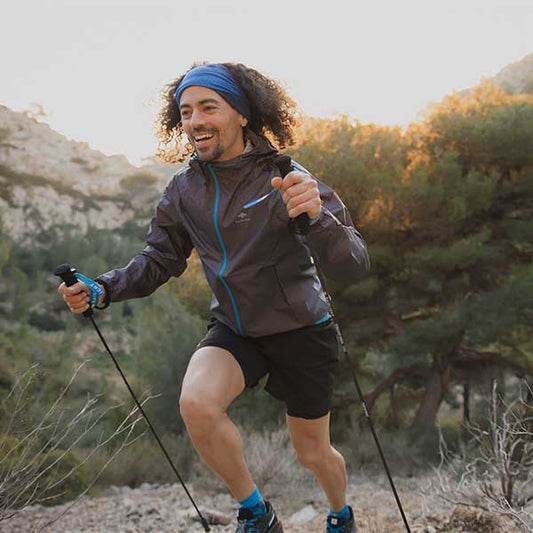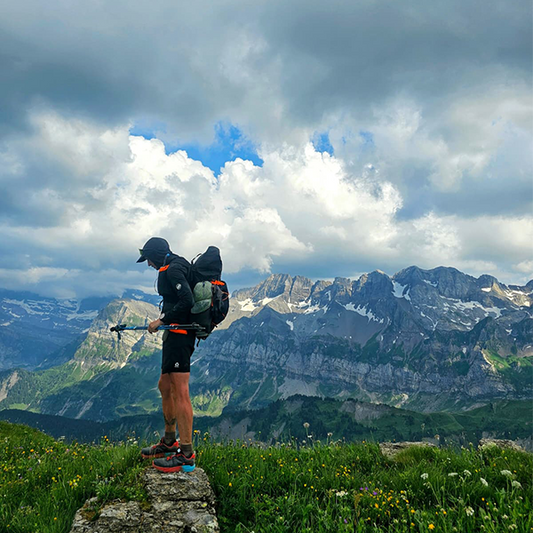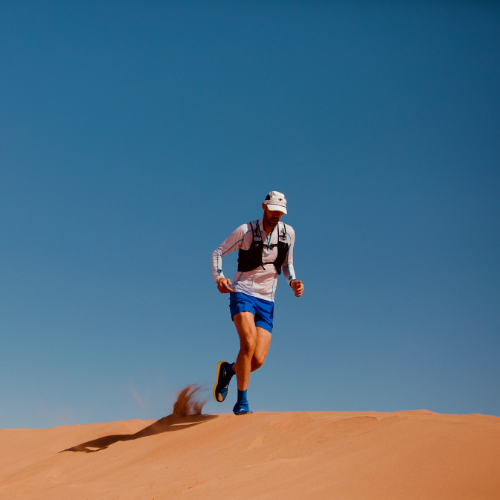The thermometer shows low or even negative temperatures, the days are short, it's grey, the wind is icy, it's snowing... Running in winter requires a certain amount of determination. And yet, winter outings can be enjoyable and bring you a lot of pleasure, provided you follow a few important rules.

Running in winter: choosing the right outfit
While in summer a T-shirt and shorts are all you need, in winter it's a different story. As soon as the temperature drops below 8-5 degrees, it's hard to know what to wear for a run. Either you're too covered up, and the result is that after the first kilometre you're too hot, or you're not covered up enough and you catch a cold at the first break.
Nicolas Cerisier, Raidlight ambassador, qualified trail running coach and ultra-trail runner, gives us his top tips on how to get through the winter with peace of mind.
Nicolas will be sharing his experience with us on a regular basis, giving us invaluable advice on training and equipment. Thanks to his many recommendations, you're sure to become a trail expert!
There are a few techniques you can use to keep warm when running in winter:
- Opt for the onion peel technique, which consists of putting on several thin layers rather than 2 thick layers.
- Opt for the tried and tested 3-layer system
- A first layer that breathes next to the skin and wicks away perspiration.
- A second, insulating and comfortable layer to keep you warm.
- A third layer for protection from the elements: waterproof and windproof.
We've written an article detailing the specifics of this technique, which you can find here.
- Cover the extremities (forehead, nape of the neck, ears, hands, feet), which are major sources of heat loss. They are responsible for around 70% of total heat loss, including 30% from the head alone! If you neglect to protect them, you'll suffer from the cold even with the warmest clothes.
Depending on the temperature and the wind, wear gloves, a neck warmer, a head and ear band, warm socks or waterproof socks.
Look after your diet
According to studies, the body burns up to 30% more fat during a running session in cold weather than during the same session in warmer weather. The body has to fight against the cold to maintain its internal temperature, which results in greater energy expenditure.
Sport on an empty stomach is not recommended in cold weather. Feed yourself at least 2 hours before your outing so that your digestion is complete by the time you set off. If you're going to run straight from bed, have at least one easily digestible snack with a hot drink. This will help warm up your body to cope better with the cold. If you intend to run for more than an hour, take a snack with you to eat during your run: energy bars, oilseeds, etc.
The need to hydrate is not necessarily obvious, as the cold reduces the sensation of thirst. Hydrate well before your outing so that you set off in good conditions.
As a general rule, in both summer and winter, eat a varied diet containing the macro- and micro-nutrients your body needs: proteins, fruit, vegetables, starchy foods, etc.
Warm up before you set off
The aim of warming up is to prepare the body for exercise: warming up muscles, tendons, joints, etc.
Warming up is important, but even more so in low temperatures, so that you set off in good conditions and don't feel (too) cold at the start.
Warm up indoors, in the warmth, so as not to put extra strain on your body to fight the cold. Perform a few lower-body movements, such as jumping jacks, lunges, knee raises and heel-and-butt kicks. A 5-minute warm-up is the minimum. Warm up for longer if it's cold outside.
If it's very cold, you can also massage your joints (ankles, knees) with a warming cream.
Beware of hard, slippery ground and patches of ice sometimes hidden by leaves. Choose your route accordingly and adjust your pace according to the grip.
How can you stay motivated in winter?
Putting on your trainers to go running at 7pm when it's dark and cold isn't very motivating. Here are a few tips to keep you motivated even in winter:
Run with a goal to reach when the warmer weather returns, but one that requires a commitment right now, like signing up for a race in the spring, for example.
Run in a group, with friends or colleagues. In a group, we share the same passion, the same emulation, so our motivation is inevitably multiplied. We do more, we go further, we want to do more. In winter, it's really by running with friends and making appointments that we can sometimes get rid of any slackness. It's sometimes difficult to find other people to do sport with, but don't hesitate to do a little research on Facebook or Instagram, and join Strava events organised in your town/region to meet other sports enthusiasts like yourself.
We all agree that it's hard to say to yourself, "I'm going to leave the warmth of the sun and find myself in the cold, maybe even in the rain or wind". Don't overthink it, just put on a good playlist or listen to a good podcast. The first few kilometres are often difficult, but then they slowly creep up on you. We often regret a training session missed, but rarely a training session completed.
Take advantage of winter to rediscover your favourite paths and routes in a different way.
Winter is a good time to build up your mental strength: facing capricious weather and rougher terrain than usual will give you more self-confidence and help you to cope with the hazards of future competitions. In trail running, you can plan for anything, nothing goes according to plan, so the more you face up to difficulties in training, the more you'll be able to cope. You know what they say: "tough training, easy war".
Don't be discouraged from the start - the first kilometre of the race is the hardest. You were warm and now you have to face the cold. You'll feel the contrast, but don't let that stop you. Make sure you're warm before you set off. Whatever happens, listen to your body and how you feel. Don't force yourself and don't hesitate to slow down or even stop if you don't feel fit enough or if you feel the slightest pain. Your body needs to get used to the conditions outside.
You can find Nicolas Cerisier on his website https://www.autourdutrail.com/ or on his social networks under the name Autourdutrail.










